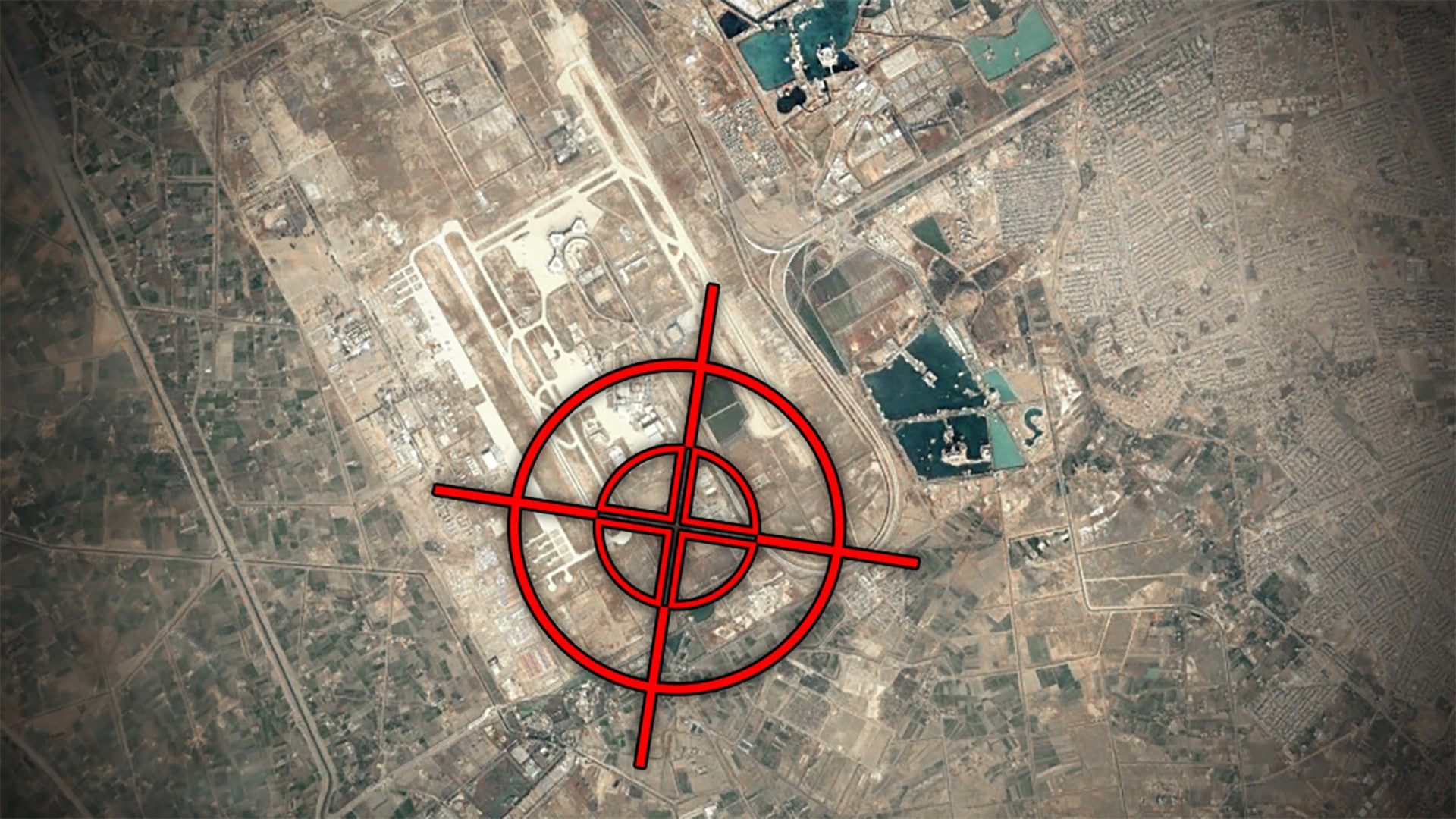Details remain thin and elements of the story are bound to change as it unfolds, but a number of explosions have rocked the area around Baghdad International Airport in the Iraqi capital. This comes as American forces are pouring into the region in response to a militant mob’s attack on the American Embassy in Baghdad two days ago. That incident was in response to U.S. airstrikes on Iranian-backed Iraqi militias this past weekend, which were in retaliation for an early rocket barrage on a base in the northern city of Kirkuk that killed a U.S. contractor and wounded American troops.
The exact number of weapons fired and the target or targets of the strikes is unclear. Initial reports indicated that between three and four rockets landed near the airport. Reuters and others subsequently reported that an Iraqi base where American troops are also stationed was one of the main focuses of the attack.
U.S. military helicopters, possibly AH-64 Apaches, also reportedly took off from an unspecified location nearby following the attack. Apaches had conducted shows of force, including firing flares, over the Embassy during the incident there on Dec. 31, 2019, and have been patrolling the general area since then.
Other rockets may have reportedly hit portions of the airport itself, such as the runway or inside a cargo handling area, as well as an access road just outside. There are also unconfirmed reports that the rocket attacks at Baghdad airport caused Iraqi security forces and civilian casualties.
The airport would not a surprising target given that, as noted, dozens of U.S. military airlifters and other military aircraft have been heading toward Iraq and elsewhere in the Middle East and Eastern Mediterranean regions since the attack on the Embassy on Dec. 31. This major air bridge has flowed through commercial airports and bases in Europe and then to military facilities, including in neighboring countries such as Kuwait and Jordan.
Curiously, two SUVs that belonged to the the Popular Mobilization Forces (PMF), the Iraqi government-sanctioned umbrella organization that oversees various militia units, including Iranian-backed forces, were also destroyed on the access road during the incident. The PMF has issued a statement that Mohammed Ridha, the head of its public relations and protocol office, as well as unspecified “guests” were killed.
This raises the possibility that the SUVs were the target of a separate attack or that the initial reports of a rocket attack at the airport were in reference to the strikes on Ridha and his associates.
Online flight tracking software also appears to show flights heading to the airport despite some reports that it had ceased operations in light of the attacks.
Based on the details available about this new incident, at least so far, the reported rocket attacks on Baghdad’s airport and the Iraqi base nearby have all the hallmarks of rocket attacks that Iranian-backed Iraqi militias have launched against American diplomatic facilities and bases where American troops are stationed in the country in the past few years. There had been a spike in such attacks recently and the one on the K-1 base in Kirkuk this past weekend was the eleventh such attack in December 2019.
It remains to be seen how the United States and Iranian-backed militias in Iraq might respond to the reported rocket attacks and the strikes on the PMF SUVs, respectively, and depend in no small part on exactly how the incidents unfolded.
Earlier in the day, Secretary of Defense Mark Esper had threatened further retaliation in response to any future attacks from Iran or its proxies in Iraq and elsewhere in the Middle East.
“To Iran and its proxy militias: we will not accept continued attacks against our personnel and forces in the region,” Esper said. “Attacks against us will be met with responses in the time, manner, and place of our choosing. We urge the Iranian regime to end their malign activities.”
However, This threat did not appear to dissuade Iranian-backed groups in Iraq. Later in the day, a spokesperson for Kata’ib Hezbollah, the militia group the U.S. government says was behind the K-1 base attack and was the target of the subsequent American airstrikes, also said that the militants were “waiting [for] orders to target American bases in Iraq.”
UPDATE: 8:25pm EST—
It is important to stress that they are unconfirmed as of yet, but there are growing reports, including now from Iraqi state television, that Qasem Soleimani, the head of the Quds Force, the extra-territorial arm of Iran’s powerful Islamic Revolutionary Guard Corps (IRGC), died in the strike on the two SUVs are Baghdad International Airport. In addition, Abu Mahdi al Muhandis, the leader of Kata’ib Hezbollah and the Deputy Chairman of the Popular Mobilization Committee that oversees the Popular Mobilization Forces (PMF), was also said to have been killed.
Be warned, some graphic photos follow below.
It is hard to overstate how significant this would be, if true. Qasem Soleimani has been overseeing Iranian support for militias in Iraq, as well as Syria and Lebanon, among other countries and is among the most influential figures in Iran today. Abu Mahdi al Muhandis has strong ties to the IRGC and Soleimani personally and has similar influence among the other Iranian-backed elements of the PMF.
No one has claimed responsibility for the strikes on the SUVs, but if Soleimani and Muhandis did die, it is hard to see how Iran and its regional proxies could not launch counterattacks throughout the region on the actors they would see as the most likely perpetrators, including the United States and Israel. This, in turn, could easily lead to spiraling escalation, at least in the near term.
UPDATE: 8:45pm EST—
Newsweek is now reporting Soleimani and Muhandis’ deaths, citing U.S. government officials.
We have ended our updates to this story and you can find continuing coverage of this major event here.
Contact the author: joe@thedrive.com
